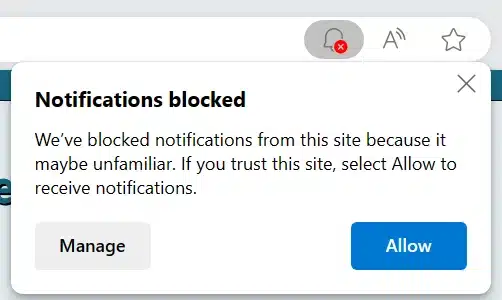Microsoft Edge now blocks spam notifications on the sites you visit

Notifications can be useful, but all too often they are used by websites to spam people. To help protect users against such irritations, Microsoft has announced new notification blocking for its Edge browser.
The company says it is aware that website notifications may not only be annoying, but can be misleading or even dangerous. The aim in block spammy notifications is to not only offer protection to users of Microsoft Edge, but also to help them to get the most out of notifications.
See also:
- Jump on the Threads beta program to get access to new features faster
- Microsoft releases PowerToys v0.71.0 with visual refresh, archive file preview and much more
- Microsoft is tweaking the Windows 11 Start menu to highlight its own apps
Microsoft says that the move is an attempt to help protect Edge users against aggressive fake advertising and false warning notifications. The company points out that while users are often easily tricked into enabling website notifications, many have no idea how to go about disabling them.
In a blog post about the new notification protections, the Edge team says:
With our partners across Microsoft, we’ve identified and analyzed dozens of types of notifications that most customers would interpret as spammy notifications. In this process we’ve also removed notification privileges from websites that send spammy notifications -- in effect blocking billions of misleading notifications. The Microsoft Digital Crimes Unit works with law enforcement agencies to find the source of scams like these and help protect users worldwide.
Starting in May, we took another important step to prevent misleading notifications before customers accept them. Our analysis found most misleading notifications come from unfamiliar sites. In Microsoft Edge 113 and above, the first notification request will be shown "quietly", with a more subtle message in the address bar, when the notification comes from an unfamiliar site.

Microsoft goes on to say: "We've seen a significant decrease in customers reporting issues with notifications after releasing this change. Notifications will still work if you have already accepted them, and you can accept notifications from sites you and other users visit often. Also, Enterprise admins can configure an allow list to make sure that their internal applications can still prompt users for notifications".
Image credit: rafapress / depositphotos